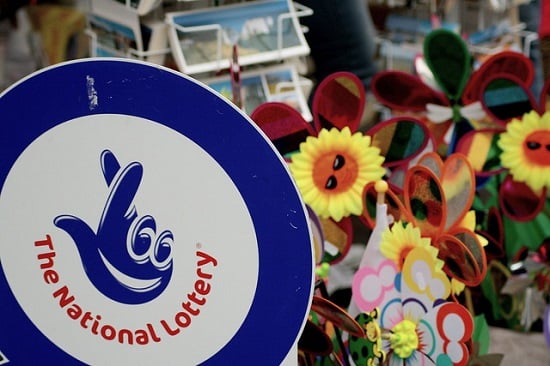
National Lottery sales have gone up, but funding for good causes is down nearly £40m after money was diverted from the fund for marketing.
Photo: K J Payne
Camelot takes £39m from good causes to boost marketing budget
Less Lottery money was available for the arts in 2018/19, despite sales increasing by £255m.
Good causes like the arts received £39.6m less from The National Lottery in the last financial year, despite a multi-million pound jump in game sales.
Returns for the year to 31 March show Camelot generated about £1.6bn for ‘good causes’ – a fund which is later distributed to arts, heritage, sports and other charitable projects – about £600,000 less than in the 2017/18 financial year.
And the money available for distribution dropped another £39m after Camelot dipped into the Good Causes fund to boost its own marketing budget by more than 50%.
The move was agreed with The Gambling Commission, and both organisations claim it will mean more money going to good causes over time.
A spokesman for DCMS, which allocates 20% of good causes funding to the arts, said 2018/19 returns to UK arts councils, Creative Scotland and the British Film Institute were “stable in relation to 2017/18” despite having about £7.9m less to distribute. DCMS did not provide numerical figures to support this claim.
Based on the average National Lottery Project Grant amount awarded by Arts Council England in the last financial year – £19,656 – Camelot’s extra marketing expenditure could have supported another 400 arts projects.
‘Raising awareness’
The drop in money for good causes took place despite a £255m growth in sales – continuing a recent reversal in fortunes for the National Lottery.
The £600,000 decrease compared to 2017/18 returns to good causes arose primarily from the mix of games sold in the past year. Scratch cards and online instant win games, which hit record sales in 2018/19, pass on a smaller percentage of their profits to good causes than draw-based games like Lotto and EuroMillions, a Camelot spokesperson said.
Camelot confirmed the additional £39m spent on marketing would have otherwise been distributed to good causes.
Instead, it is being used to promote the National Lottery – “not just games, but brand campaigns to raise awareness of good cause projects as well.”
“Without it we would deliver even less to good causes,” the spokeswoman claimed.
Spending three times as much
The increased marketing spend was necessary to edge out the competition posed by “synthetic” national lotteries, says Camelot.
A spokesperson said the rapid growth in society lotteries operating on a national scale means it must spend significantly more to achieve the same results: “To put this in context, the National Lottery is now having spend three times as much on marketing just to achieve half the share of voice in the lottery market it had eight years ago.”
The National Lottery’s marketing expenditure is otherwise fixed at about 1% of its revenue – in 2018/19, that was worth more than £77m. The money diverted from good causes brings the year’s marketing spend to £116m.
Reliance on National Lottery
The Theatres Trust said Camelot’s increased marketing budget is welcome if it increases arts funding in the future.
But Director Jon Morgan said the reduction in funding available for good causes was “a concern” given its position as a “vital funder” of arts buildings over the past 25 years.
Lottery money has supported restorations and refurbishments at venues including Hall for Cornwall and the Royal Exchange theatre in Manchester, saved historic theatres like Wilton’s Music Hall and Alexandra Palace Theatre, and helped build new venues including Shakespeare’s Globe and Chester’s Storyhouse.
“As funding from other sources is decreasing, the role the Lottery plays in maintaining the quality of British theatres is increasingly important,” Morgan said.
“Without the works it has funded, the theatre landscape of 2019 would be entirely different.”
About £353m in Lottery grants – out of a total of £465m – were awarded to NPOs in 2017, providing four-year core funding to 149 organisations from 2018 to 2022.
Join the Discussion
You must be logged in to post a comment.